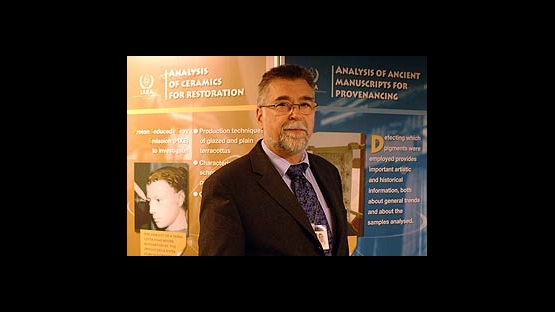Nuclear methods, some applied to the analysis of art and archaeology for the first time in the 1970s, have revolutionized the field of art history, notes a science feature in the New York Times that focuses on a global research project the IAEA is leading.
The feature is based on an exhibit displayed at the IAEA in September that highlights work being done in more than a dozen countries. The project involves about 60 scientists and runs to 2008 at a cost of about $230,000, says Mathias Rossbach, a senior officer in the IAEA Department of Nuclear Sciences and Applications. The work is being carried out under an IAEA Coordinated Research Project initiated in late 2004 on the applications of nuclear analytical techniques to investigate the authenticity of art objects.
"Curators at top museums in Europe and the United States have long reached for the instruments of nuclear science to hit treasures of art with invisible rays," the New York Times feature reports. "The resulting clues have helped answer vexing questions of provenance, age and authenticity."
Nuclear analytical techniques are widely used in many fields, as an IAEA international conference in 2003 documented. The methods include neutron activation analysis, proton-induced X-ray emission, accelerator mass spectrometry and X-ray fluorescence spectrometry. The conference showcased some 100 examples of the diverse and wide-ranging use of nuclear analytical techniques in 61 countries. They range from art- and cultural applications to monitoring pesticides in milk to finding answers to the sudden death of young males in northeast Thailand. They also rank among the best tools for monitoring environmental pollution.


